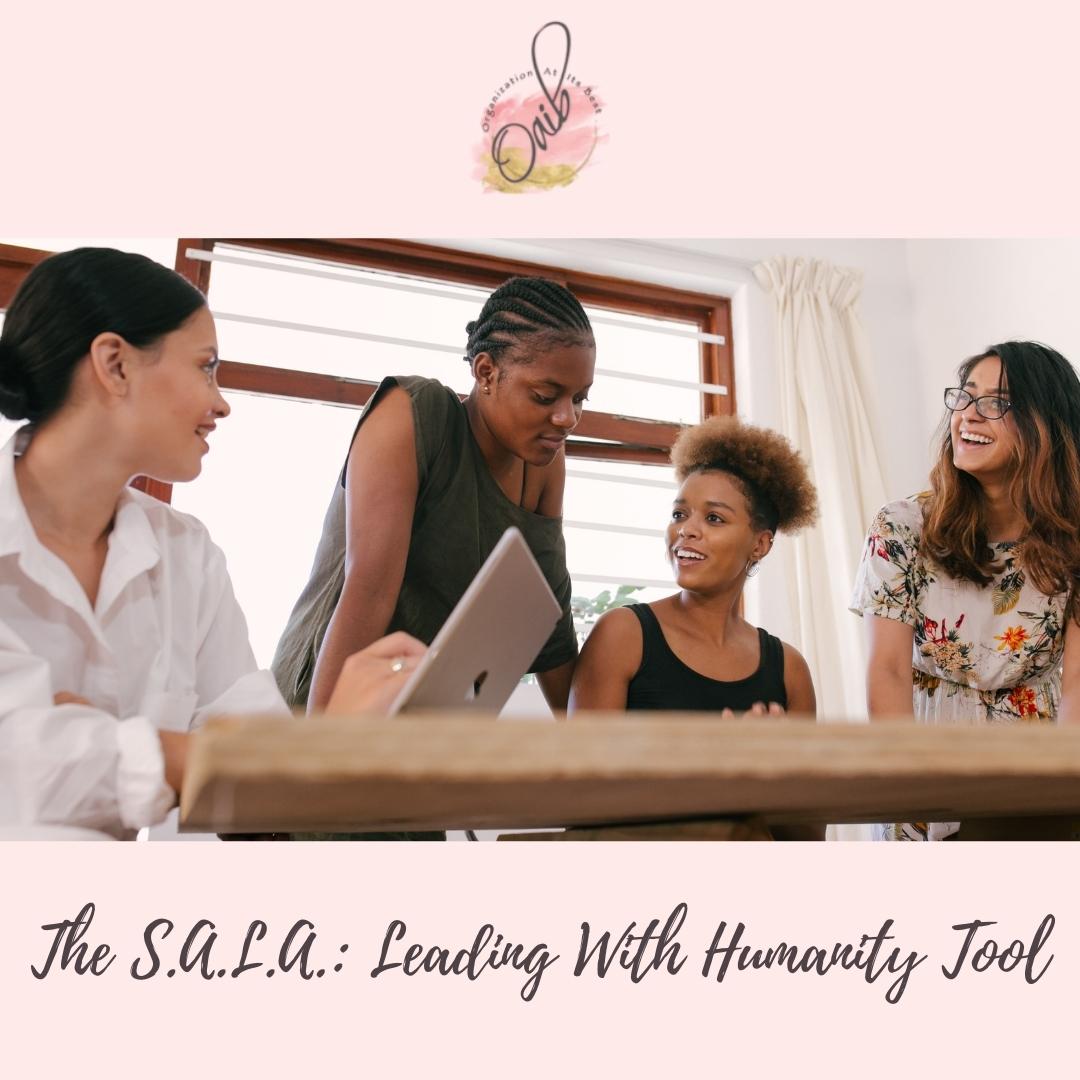
JANUARY 17, 2023
The S.A.L.A.: Leading with Humanity Tool
Leaders need the right tools if they are to build equity into organizational cultures.
Here’s a tool we created at OAIB and give to many of our clients.
Our hope is that it may help those of you who are serious about making positive changes in your workplace.
It’s called S.A.L.A., and it’s intentionally simple.
S.A.L.A. stands for:
Here’s how it works…
Share
The first step to using S.A.L.A. is to share. Share with your colleagues what you expect from them, share what you are looking for, and share what you need.
Let’s say you have to take a leave of absence to be with a sick family member. You wouldn’t simply tell people that “I’m going to be out for a week,” and not give a reason.
If you didn’t share the “why,” your colleagues and organization wouldn’t know what is going on with you, as a human, and there would be many consequences. People may resent you, or be confused. Piles of backed-up work may get dumped on you the moment you return. Maybe calls and texts would go unanswered. You would get frustrated and overwhelmed.
Why?
Not because of other people, but because YOU didn’t share with your team what was happening in your life, and so they moved forward with business as usual based on assumptions.
And all this time, you didn’t get the compassion, help, and space you needed. Yes, even leaders have human needs. It’s OK to share this, to be vulnerable. In fact, I’d say it’s vital to bring your whole self to work.
Share your needs, so the people around you can meet them. When you do this, you also create an environment where employees can do the same.
Ask
It’s up to the leader to create an environment where people are free to ask questions and feel secure enough to be questioned.
If you want an open, transparent culture, you, as the leader, need to model the behavior you want. Show that it’s OK for people to ask any question of you without you getting defensive.
I’ve met a lot of leaders who feel like their authority is being questioned just because an employee wants something as simple as a further explanation. When you’re like this, you are acting from a place of fear, and fear will permeate the culture that you lead.
Lead by example and be confident enough to be questioned.
Listen
Have you ever been around someone who cuts you off mid-sentence? How did it make you feel?
Don’t interrupt people. Don’t start forming your response, judge the person, try to figure out how to end the conversation, or even wonder how to make them like you. These are called listening blocks, and we all do them.
Instead, listen with curiosity. Set your intent to understand. See what you can learn. Hear the full statement and repeat what you heard back to the speaker, to both verify and validate.
If you didn’t hear correctly, ask them to explain again and keep asking questions until you’re on the same page.
As a leader, you absolutely must listen when people talk. When you actually listen, not only do you understand more, but you help people feel understood – a real and powerful human need.
This alone will make you more respected…and a lot more informed about your organization and the people in it.
Action
You’ve done a great job sharing, asking, and listening, so now it’s time to act.
As leaders, we can create a sense of allyship that eliminates fear and doubt by taking action alongside our employees. By “doing it together,” you allow people to bring their full authentic selves to work.
You can give voice to the voiceless when people see their leader working in alignment with the team.
If you would like to learn more about how to be an authentic, effective leader, check out our executive coaching program and leadership academy.
We have many other tools like this one to help.
Organization At Its Best Founder and Chief Executive Officer, Tawana Bhagwat, has more than twenty-five years of experience directing Human Resource administration, change management, learning and development, facilitation, DEIB, and executive coaching.

